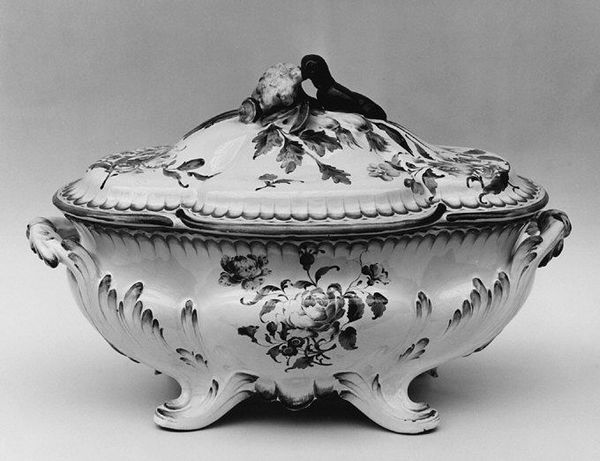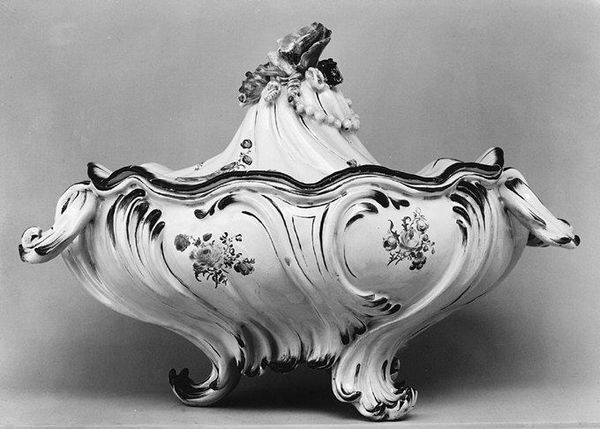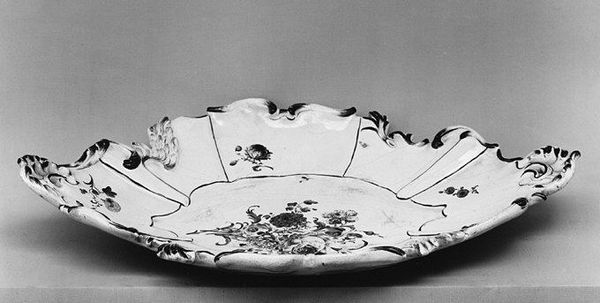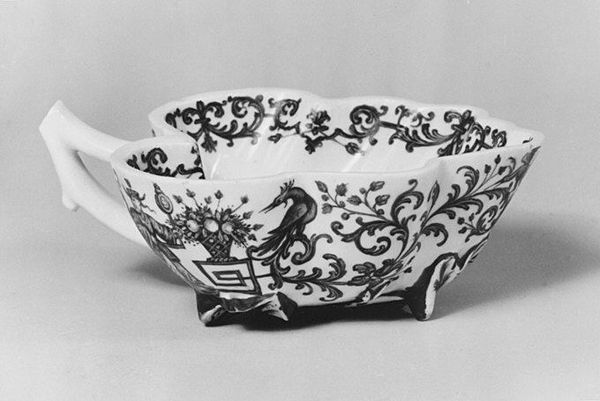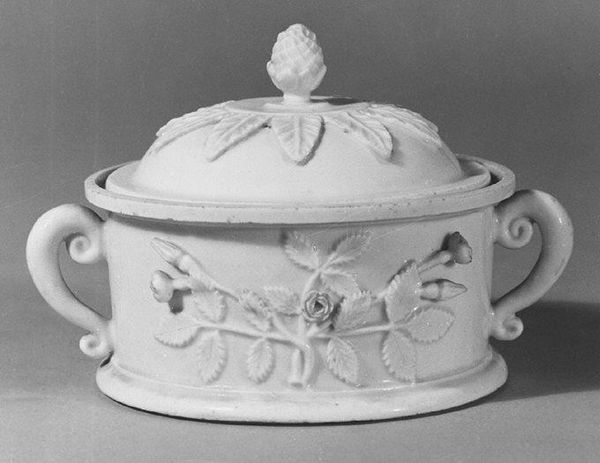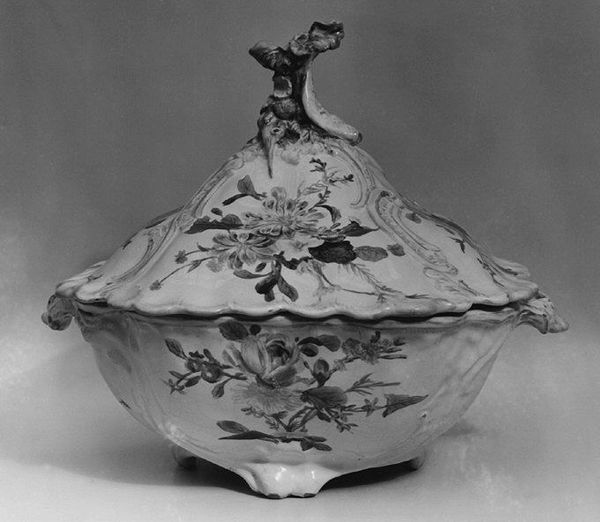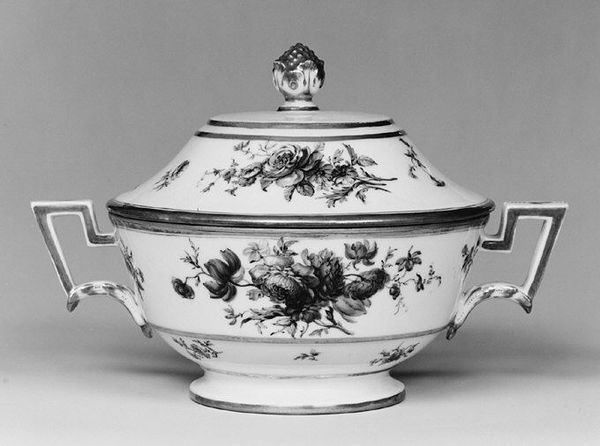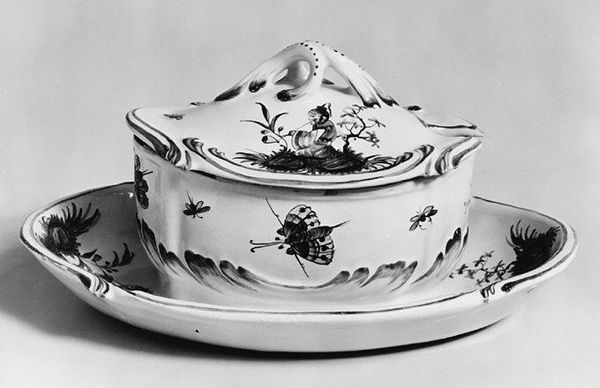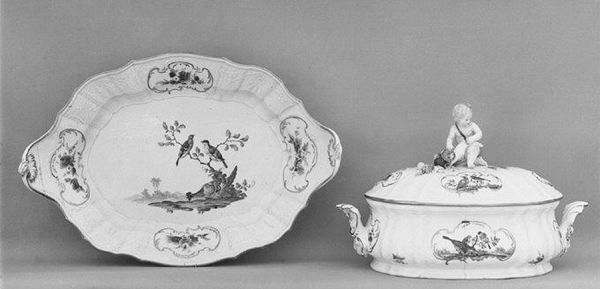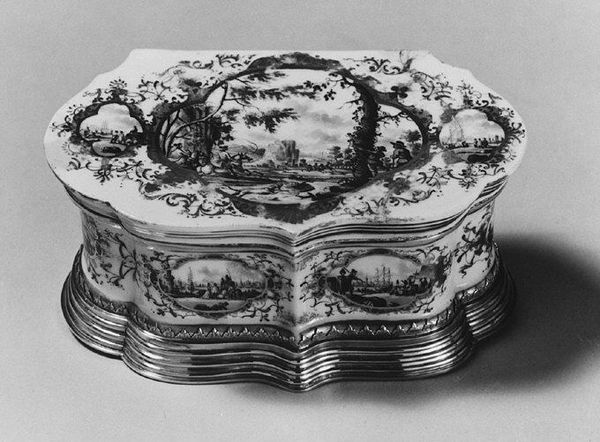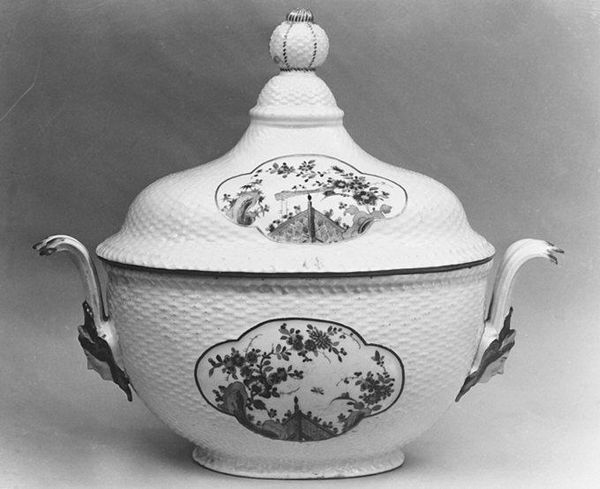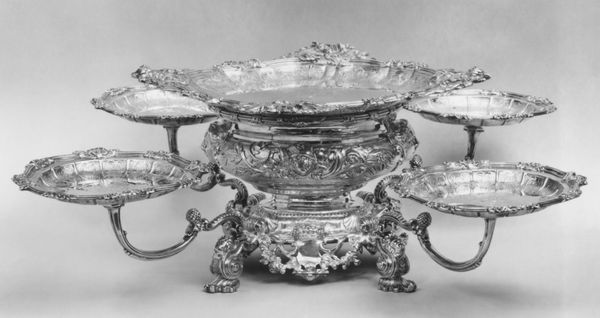
ceramic, sculpture
#
sculpture
#
ceramic
#
flower
#
sculpture
#
black and white
#
monochrome
#
decorative-art
#
rococo
Dimensions: Overall (each): 8 3/4 × 14 × 7 3/4 in. (22.2 × 35.6 × 19.7 cm)
Copyright: Public Domain
Curator: Gazing upon these monochrome photos, I find myself quite taken with this pair of tureens crafted by the Fauchier Manufactory, likely sometime between 1755 and 1765. It's currently held in the collection of the Metropolitan Museum of Art. What leaps out at you first, do tell? Editor: An almost overwhelming sense of Baroque exuberance, a controlled explosion of form. The density of decoration makes it feel less like a vessel and more like a sculptural object. Curator: Precisely! Let's plunge into the delightful details. Notice the handles shaped like these rather charming animal heads, and then there's the lid positively bursting with flowers, like a tiny sculpted garden atop a snowy hill. And those feet—a graceful, sweeping curve that echoes the overall Rococo aesthetic. Editor: The monochrome lends a peculiar severity to the ornamentation. Without color, we are forced to focus on texture and form—the prolixity of the floral arrangements and the sinuous lines of those bestial handles. One might almost say the absence of color foregrounds the artifice. Curator: A lovely point! The choice to depict them in monochrome truly shifts the perspective, stripping away a layer of perceived prettiness and emphasizing, as you so wonderfully articulated, the intentional craftsmanship and sculptural form. It reminds me of how different a melody can sound when played in a minor key. Editor: And consider the tureen as signifier, not merely as functional object. These were not meant for humble kitchens. The form is a declaration of status and taste, and the excessive decoration performs a kind of visual one-upmanship. It whispers of opulent feasts and elaborate rituals. Curator: Yes! Think of the lavish banquets and the flickering candlelight reflecting off the delicate ceramic... it’s transporting, isn't it? Imagine the hands that crafted each petal, each tendril of the floral arrangement, or consider the mouths this might have fed. The tureens stand as silent, elegant witnesses. Editor: The reduction to monochrome helps reveal underlying semiotic structures: object, class, presentation. The absence of color clarifies its aesthetic pronouncements, stripping away distractions. Curator: Indeed. And ultimately, beyond the surface, lies a question of the stories objects can tell and the worlds they can open. These lovely ceramic sculptures have transported us for the moment to another world, filled with artistry, class, and craftsmanship. Editor: A somber luxury then—beautifully wrought. A glimpse into a past world.
Comments
No comments
Be the first to comment and join the conversation on the ultimate creative platform.
